When Jasmine Thomas-Girvan was a child, she loved to observe a flamboyant woman who wore clothes in radiant colors and who always had a hibiscus flower in her hair. That woman moved about her world in such a unique way that Thomas-Girvan was intrigued and wanted to know her secret. What made that woman so special? The woman in question is the well-known Jamaican artist Dorothy Henriques-Wells, and to this day Jasmine Thomas-Girvan credits Henriques-Wells with being one of the main reasons why she became an artist.

But there were other early influences as well, like a cousin who lived in the United States. This cousin went to art school and when she visited Jamaica, Jasmine would be fascinated by her paints and paintings. And, even before that, as a kindergartener, she attended the Fay Simpson school, named for and run by a woman who was a ballet teacher and a musician. “At Fay Simpson’s the focus was on creativity, so we did a lot of dancing and acting. We were also placed on floats. It was a very rich environment for a child. All of that stayed with me as I grew and became a visual artist.”
Jasmine Thomas-Girvan was born in the metropolis of Kingston on the island of Jamaica but had the rather unique experience of living a rural kind of life in an urban environment. On busy Molynes Road, her family lived on nine acres of heavily fruited land purchased by a grandmother. “For all intents and purposes the family lived in a country setting. Whenever we would leave or come back home we would step from one reality into another. That sense of competing reality would come to inform my work. As too, would be the importance of nature.”
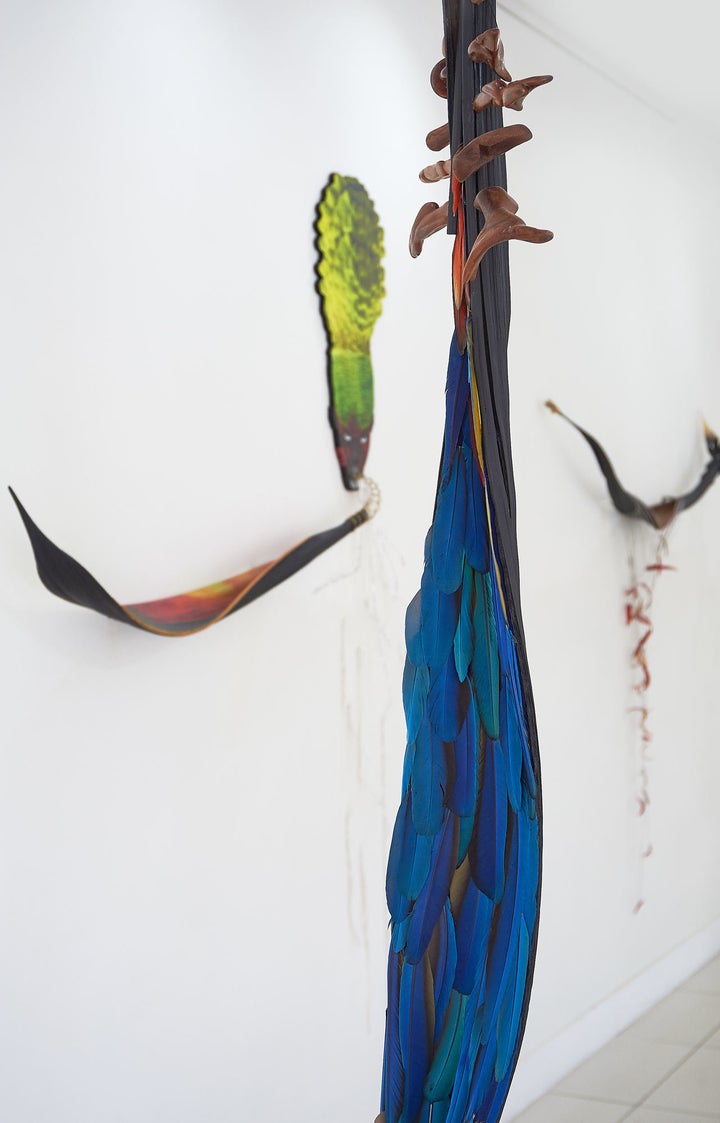
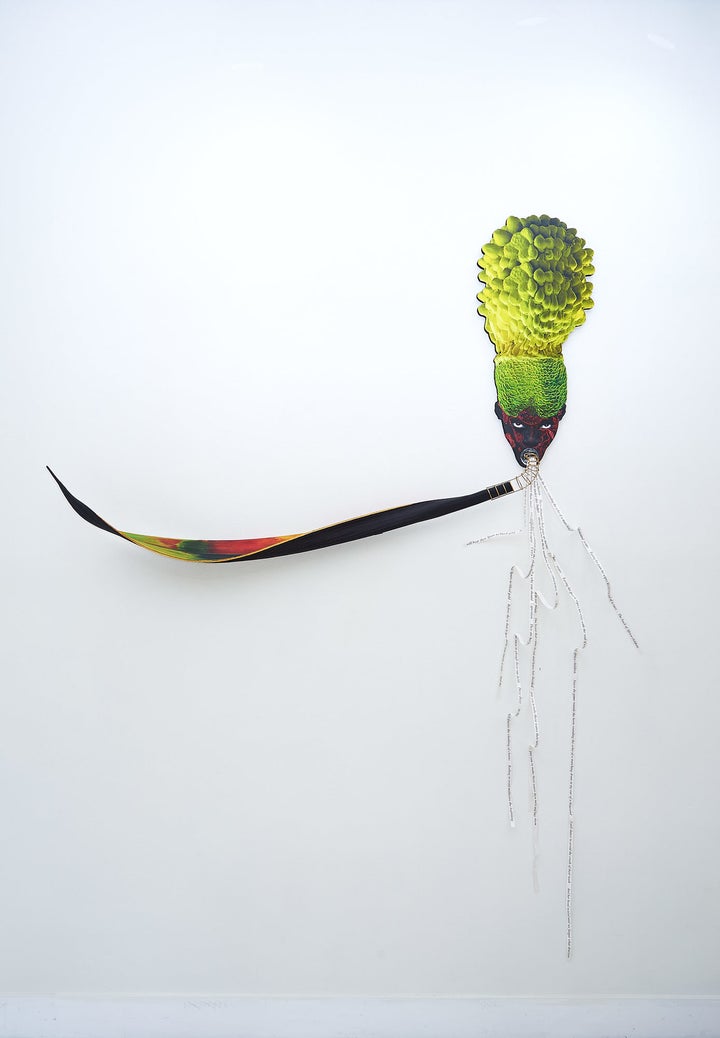
At home, she had parents who, while not artists themselves, definitely had a flair for creativity. Her mother made the curtains and home goods that the family used, while her father designed the furniture in the home. Her grandmother, with whom the artist had a loving and enduring relationship, also lived with the family. “My grandmother was a pretty fascinating woman who lived through a lot and who had a definite way with people. Though she was from the countryside at one point she had made her way to New York where she lived for a while, before returning home. I guess having a country style yard in the middle of a city was how my grandmother was able to have the benefit of both a cosmopolitan and a country life.”
Thomas-Girvan would eventually go on to attend The Queen’s High School in Kingston. “At the time when I attended Queens High School the focus was on making you a very integrated and very rounded person. One of the things that particularly stands out for me about my time at Queens was that the learning of crafts was viewed as a life skill. Crafts were not something dispensable, as it seems to be today, rather crafts were something you needed to survive. There was needlework and cooking class as part of the curriculum. My needlework teacher at Queens — Mrs. Vincenti Levy — was a very patient and gentle person. You could never do anything wrong for her and it was a joy to attend her class. This teacher and her class set the framework for a willingness to experiment and the lack of fear that has characterized my artistic practice. Consequently, I do not flinch now in learning new techniques, thanks to this lady.”
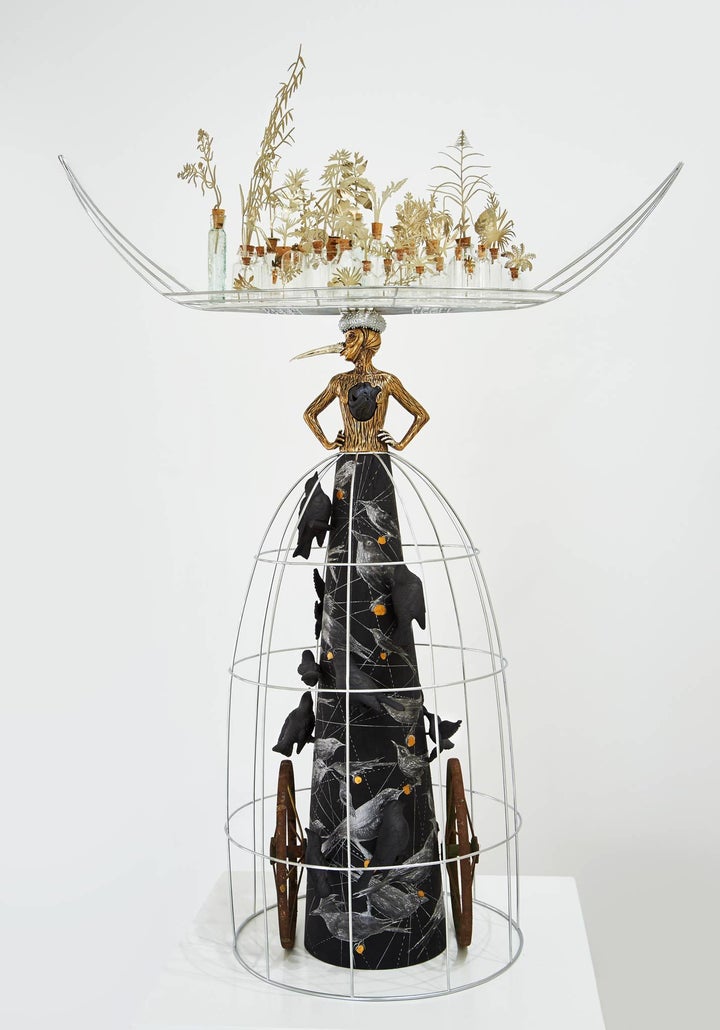
At The Queens School, too, she remembers a “mad and wonderful” Scottish art teacher named Douglas Warner who used the art room to create a relaxed space where one’s “best self” came forward.
Mrs. Vicenti Levy might have had an even bigger impact on the artist’s life than at first recognized, for Jasmine Thomas-Girvan would eventually go on to study Textile and Jewelry Design at Parson’s School of Design in New York. The artist remembers her time at Parson's and New York as being quite fantastic. For her thesis show she produced a line of miniscule and very detailed hummingbird jewels that she sold to Macys, Barneys and Lord & Taylor. Her textile motifs at the time engaged typically Caribbean images with unusual colors; for example, clusters of banana trees done in greys, magentas and blues.
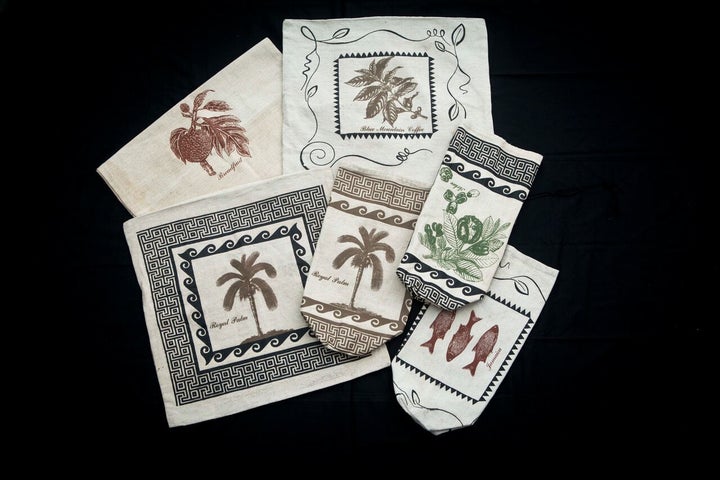

Shortly after graduation, Thomas-Girvan got married and returned to Jamaica, where she started creating one-of-a-kind pieces of jewelry for exhibition. Six weeks following the birth of her first child she had a show at The Mutual Gallery that was well received. Every two years after that she would have a show at the Gallery. “In retrospect,” the artist muses, “I guess I was lucky. I knew that the art market in New York — concentrated around seven seasons each year — was just not for me. I just cannot produce work at that level. My very first show launched my career in Jamaica. I was lucky too in having a husband that gave me a tremendous amount of support in my work. In time, I would have two children and it is true what so many women artists say that it is hard being a wife, a mother and an artist, but these can all be mutually supportive endeavors.”
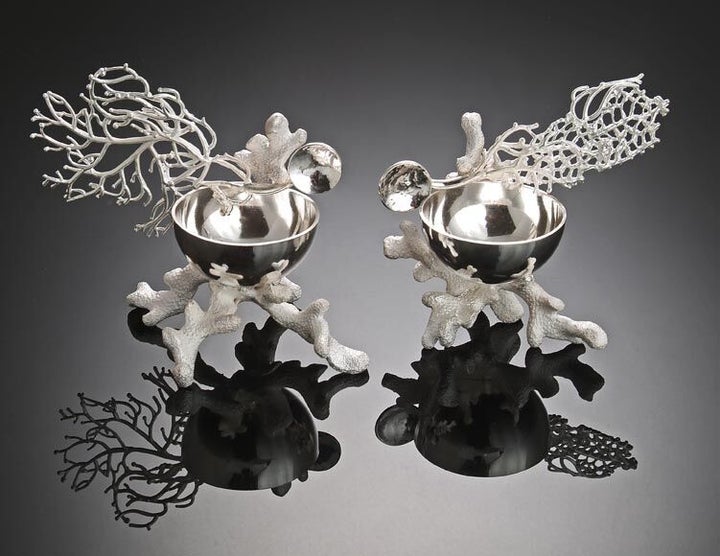
In Jamaica, the artist’s jewelry pieces started to become more elaborate and to take on environments of their own. Because of her background in textiles her work was increasingly textural and layered. In 2000, the family moved to Trinidad where her husband had a new position, and the close proximity to the rainforest and so many new and unusual visual forms that can be found in the rainforest started infusing her work. “In Trinidad I learnt to embrace a more outwardly diverse practice. The thing about moving to another country is that it liberates you in terms of space and you are free to reconfigure and move into a new space.”
While living in Trinidad, the artist suffered the catastrophic loss of her husband of 30 years. Says the artist, “We were together 33 years. We had a good solid friendship. A good solid relationship. Our interests converged. As an academic he could fill in so many details for me. It is difficult when that conversation is suddenly silenced. It is a tremendous loss.”
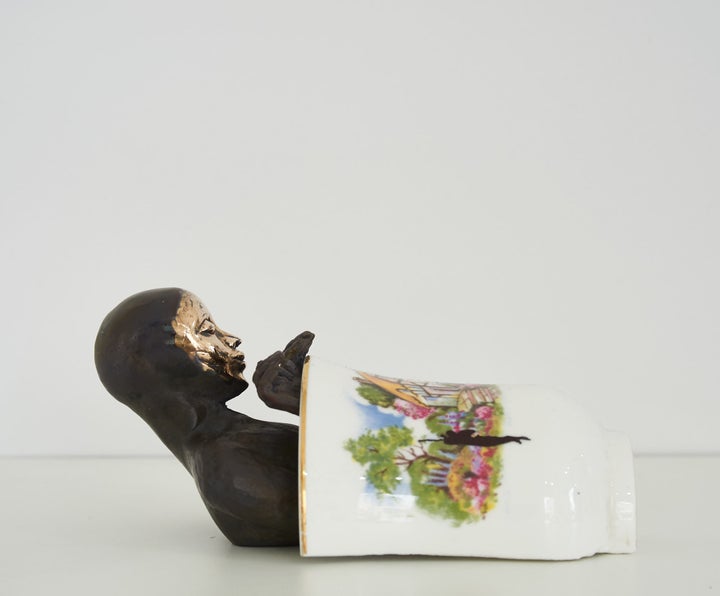
Not surprisingly, much of the work she has done since her husband’s death has revolved around coming to terms with that loss. On a residency at the Vermont Studio Center she found herself utilizing glass to make an apparatus for safe passage into another world. Quite movingly, there is a body inside this apparatus. Ancient Taino and African spirits as well as protective matriarchs are now ever-present in her works. More and more the artist utilizes glass in her work, glass being a medium that is paradoxically both extremely hard and fragile at the same time.
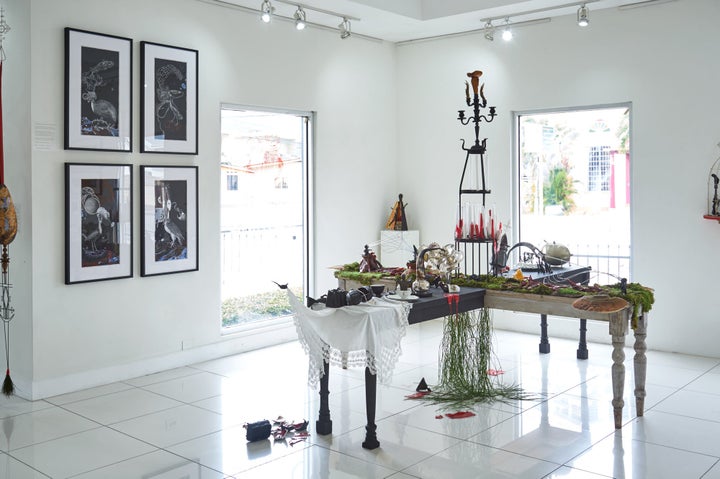
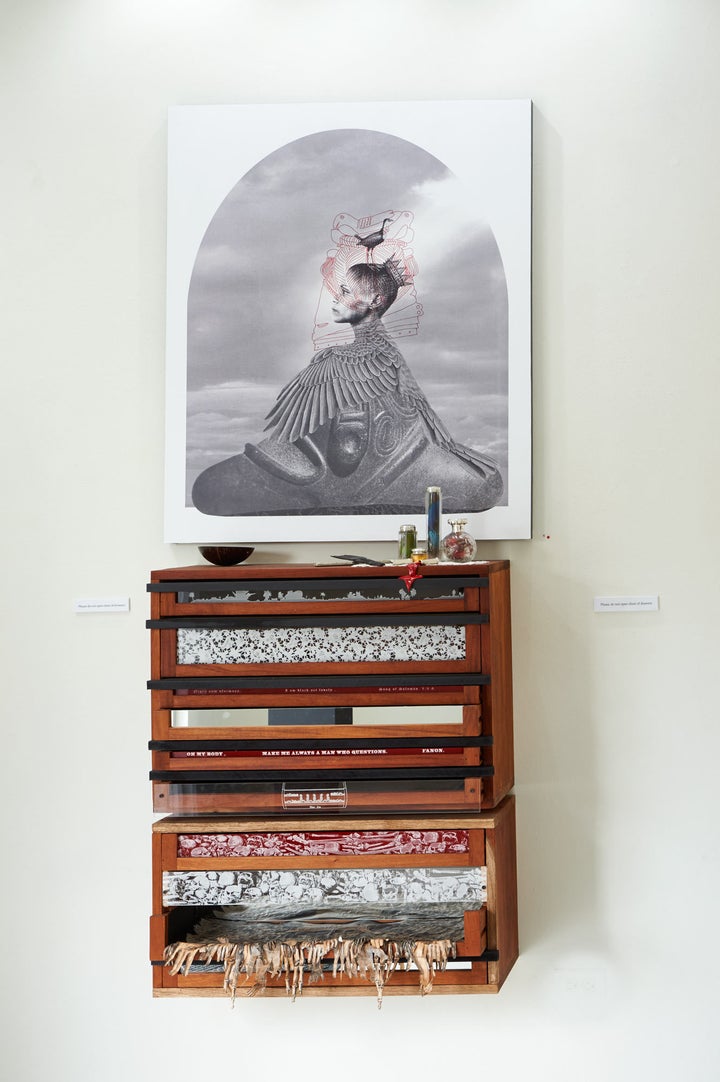
In her most recent exhibition, 'Dreaming Backwards, the Magic of Breaking the Spell', the artist is now engaged in a project that for her is a “fixation on making right our perception of what constitutes our history.” The “our” here being presumably the history of the majority of the Caribbean, African diaspora, and a larger African history. In a part of the work one can find in a series of drawers in a chest, different narratives on the socio-political implications of the coming of Christopher Columbus to the New World and the decimation of the Taino peoples. There is one drawer, for example, on the impact of slavery and the slave trade on the Caribbean. What is fascinating is that this work is also about loss of the artist’s husband though refracted through a different lens. What I mean by this is that the artist is tackling many of the themes her husband, an economist, tackled in his writings, and in his non-academic positions. In other words, in this work Jasmine Thomas-Girvan is still having a conversation with a much beloved husband.
Until next time.
